Botanical name : Linum usitatissimum
Common name : Linseed, Flax seed
Easy for seed saving
Lifecycle: Annual
Pollination: Self-pollinated
Mating system: Perfect, self fertile flowers
Suggested spacing: Linseed being grown for fibre is closely sown to help force tall, unbranched growth. Linseed grown for culinary uses can be sown further apart.
Seed specific requirements: Daylength triggers flowering in some varieties
Isolation distance: 2 m
Population size: 50 or more plants
Seed maturity: Seed us mature when the capsule containing the seeds turns brown
Processing method: Dry threshing and winnowing
Expected seed viability: 5 years
Images
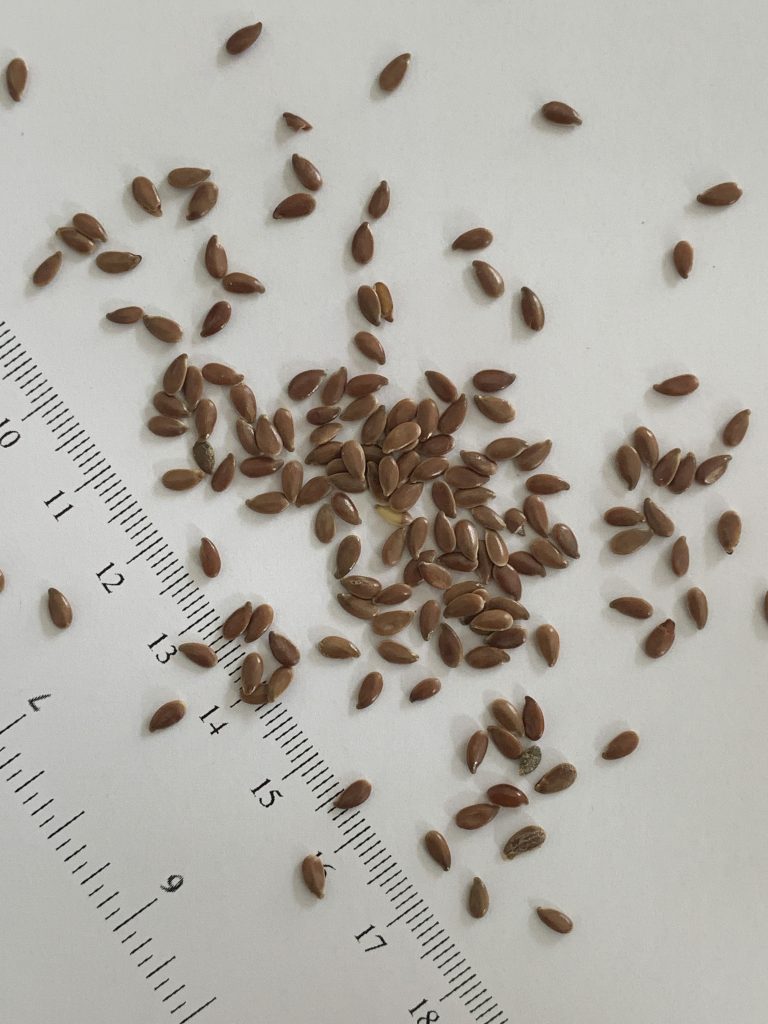
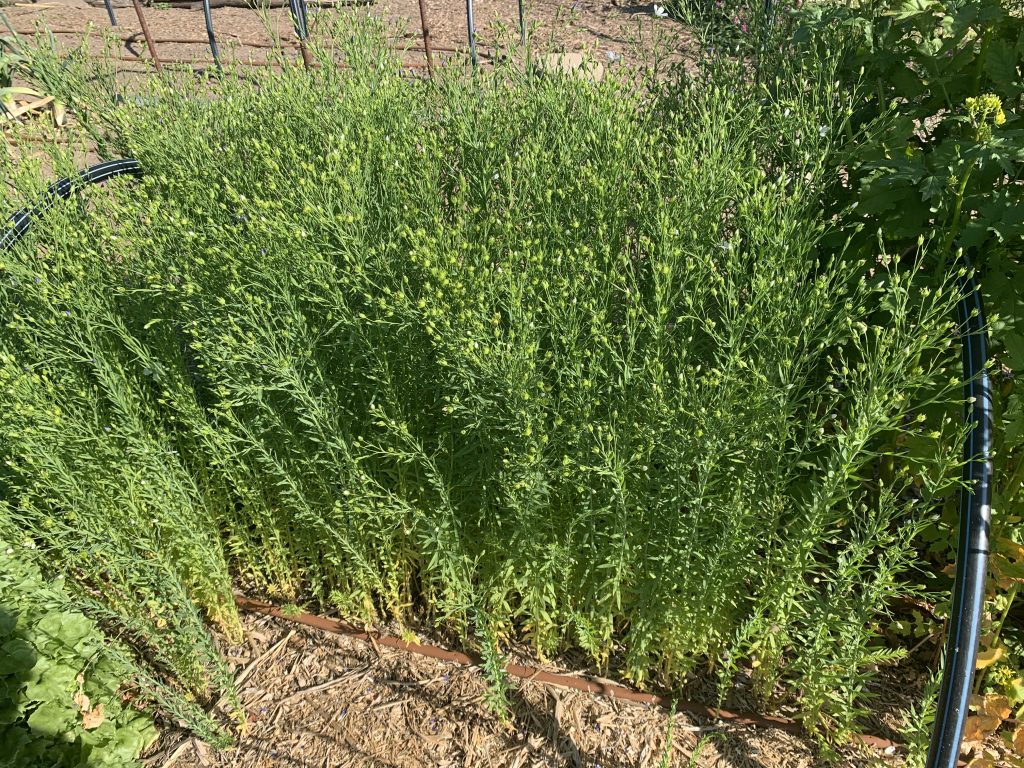
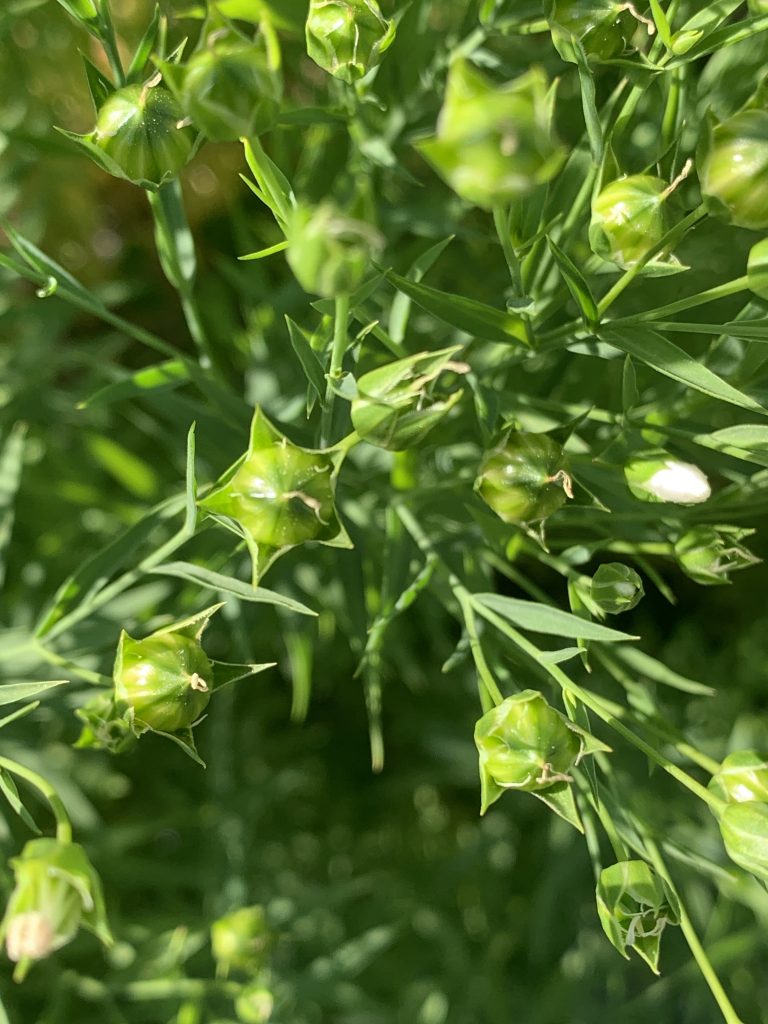
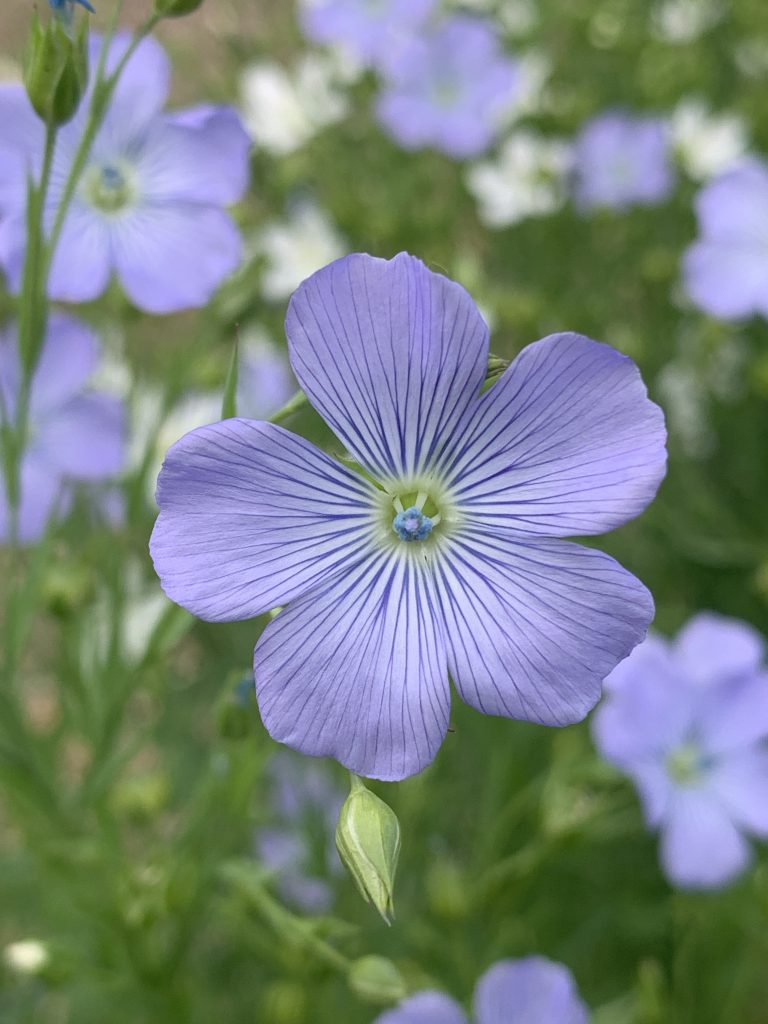
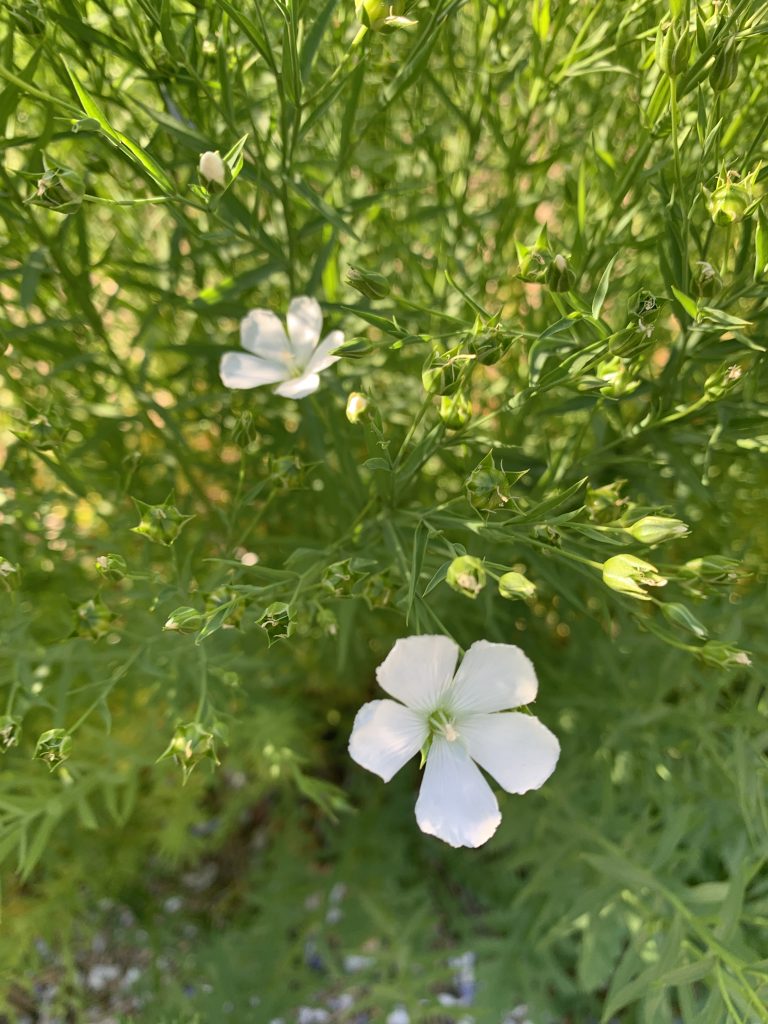
Growing for seed
Linseed is a self-pollinating annual that copes with cold conditions down to minus 5C. In southern Australia it is typically sown in late April or May to grow through winter. Flowering then starts in the spring or when the daylength required for that variety is reached.
Plants usually have white or blue flowers.
Linseed is typically sown at quite close spacings so the recommended 50 or more plants can be grown in a modest amount of bed space. It is easily sown by broadcasting the seeds and lightly covering with soil.
Selection
Fibre varieties used in the production of linen are selected on their height and minimal branching. Conversely oilseed and culinary varieties are usually selected to have a great deal of branching and therefore produce a lot of seed per plant.
Harvest
Seed is mature when the seed capsules go brown. They can either the harvested individually if only small quantities of seed are needed or the entire stalk is cut when the majority of the capsules have ripened.
Stalks are spread out to dry for several weeks before processing.
Processing
Rubbing the seed capsule will easily break it open and dislodge the seed. A rubber mat and tile float used in a similar way as done for lettuce seed processing, to rub the seed heads can speed up the process for larger quantities.
The resulting mix of seed and chaff will need to be winnowed to get clean seed.
Seed should be kept in a paper or fine mesh bag for several more weeks before being stored in an airtight container and being placed into the freezer for 2 to 3 days to kill any pests.
Contributors
Liz Worth, Nellie Pryke
